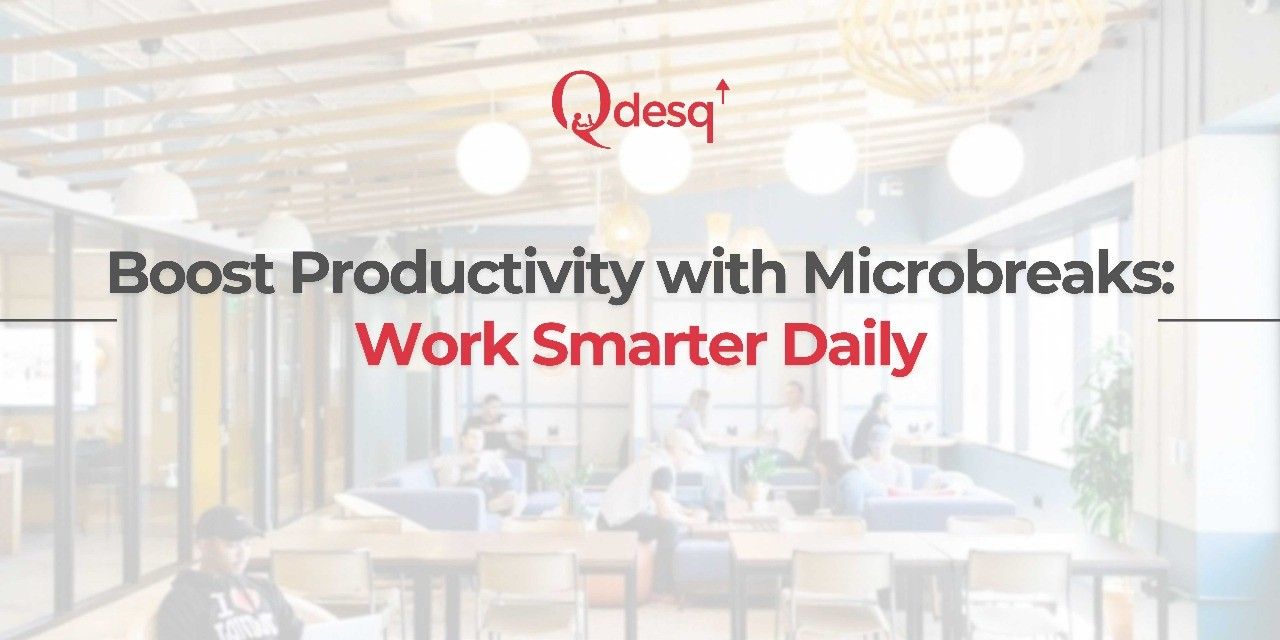Have you ever sat in front of your screen for hours, only to finally notice your back is sore, your head feels dull, and you can’t remember why you started that spreadsheet in the first place? It’s something most people experience. The usual response is to keep going and try harder, but perhaps the most effective way to work smarter is to take more short breaks, small pauses called microbreaks.
What Are Microbreaks and Why Do They Matter?
Microbreaks are brief, intentional pauses lasting anywhere from 30 seconds up to five minutes. They’re not your usual coffee break or lunch hour; think of them as quick reset moments subtly slipped into your workday without disrupting your flow. You’ve probably taken these breaks without realising it, maybe zoning out, staring out the window or stretching your shoulders mid-task.
These small pauses sometimes make us feel guilty because we think we’re not working hard enough. Science says that’s not true. Taking short breaks can actually help you feel more alert, less worn out, and better able to stay focused. Instead of being lazy, you’re allowing your mind and body to rest so they can keep performing at their best.
The Science Behind Microbreaks
Taking short breaks throughout the workday offers clear benefits for both mind and body, including:
- Preventing mental fatigue and improving focus
- Reducing mistakes by keeping cognitive function sharp
- Allowing the brain to switch into a relaxed mode where fresh ideas emerge
Microbreaks keep energy levels steady, helping you stay sharp and less tired by the end of the day.
Simple Microbreak Ideas to Try at Work
Integrating microbreaks doesn’t require a big lifestyle change. Here are easy, practical ideas you can try in your coworking space or home office:
- 20 Minutes Rule: Every 20 minutes, take a 20-second break to look at something that’s 20 feet away. This helps reduce eye strain from spending too much time in front of a screen.
- Quick Stretches: Roll your shoulders, gently twist your neck side to side, or wiggle your fingers to alleviate muscle tension.
- Deep Breathing: Pause to take three slow, deep breaths—inhaling for four seconds, holding for four, then exhaling for four. It’s an instant mood and energy booster.
- Short Walks: Stand up for 30 seconds and walk around your desk or hallway. Even this small burst of movement revives circulation and alertness.
Microbreaks and Mental Health
Constant work without breaks pumps your body full of cortisol—the stress hormone that makes you anxious and foggy-headed. Microbreaks act like pressure release valves by stopping stress from building up to dangerous levels. Workers who take regular microbreaks report feeling around 40% less overwhelmed and sleeping much better at night.
These tiny pauses also prevent burnout. Giving your mind regular rest helps maintain high performance for longer periods. Over time, mental health benefits compound, improving overall well-being.
Physical Health Benefits
- Improved Posture: Sitting for hours damages posture and tightens muscles. Microbreak movements help alleviate these effects before they become painful.
- Eye Relief: Screen glare and blue light exposure can cause headaches and vision problems. The 20-20-20 Rule helps prevent these issues.
- Sustained Energy: Taking short breaks throughout the day helps you stay awake and focused instead of feeling tired around 3 PM.
Creativity and Problem-Solving Boosts
Ever had a brilliant idea in the shower or while going for a walk? That’s your brain’s default mode network at work. Microbreaks provide time away from intense focus, allowing your subconscious to work through problems and spark innovation.
Creative professionals who routinely take microbreaks generate about 25% more original ideas and novel solutions [source link]. To maximise this benefit, completely disconnect during the break—look at a plant, people-watch, or simply close your eyes for a moment.
Creating a Microbreak-Friendly Office Culture
Taking breaks can sometimes feel countercultural in high-pressure workplaces. The solution? Lead by example. When leadership openly takes microbreaks without apology, it signals to the entire team that taking breaks is acceptable and beneficial.
Sharing the science behind microbreaks with colleagues helps combat break-related guilt and encourages a supportive culture. Partnering to remind each other to stretch or breathe can turn microbreaks into shared moments instead of solo efforts.
Consider making microbreaks part of the official schedule by blocking short intervals in calendars. Official recognition removes hesitation and helps everyone feel comfortable.
Conclusion: Small Pauses, Big Results
Microbreaks are important tools that can refresh your mind, relax your body, and make you more productive. Taking short breaks helps you stay focused, avoids burnout, lowers stress, and even sparks creativity. Simple routines like stretching, taking deep breaths, or using the 20-20-20 Rule can help make a big difference in how you feel and perform throughout the day. Creating a work environment that supports these breaks can really help with your overall health and long-term success. Find out how taking microbreaks in the right setting can lead to better results.
Visit Qdesq today and take your work experience to the next level by choosing coworking spaces designed to support your well-being and productivity.











